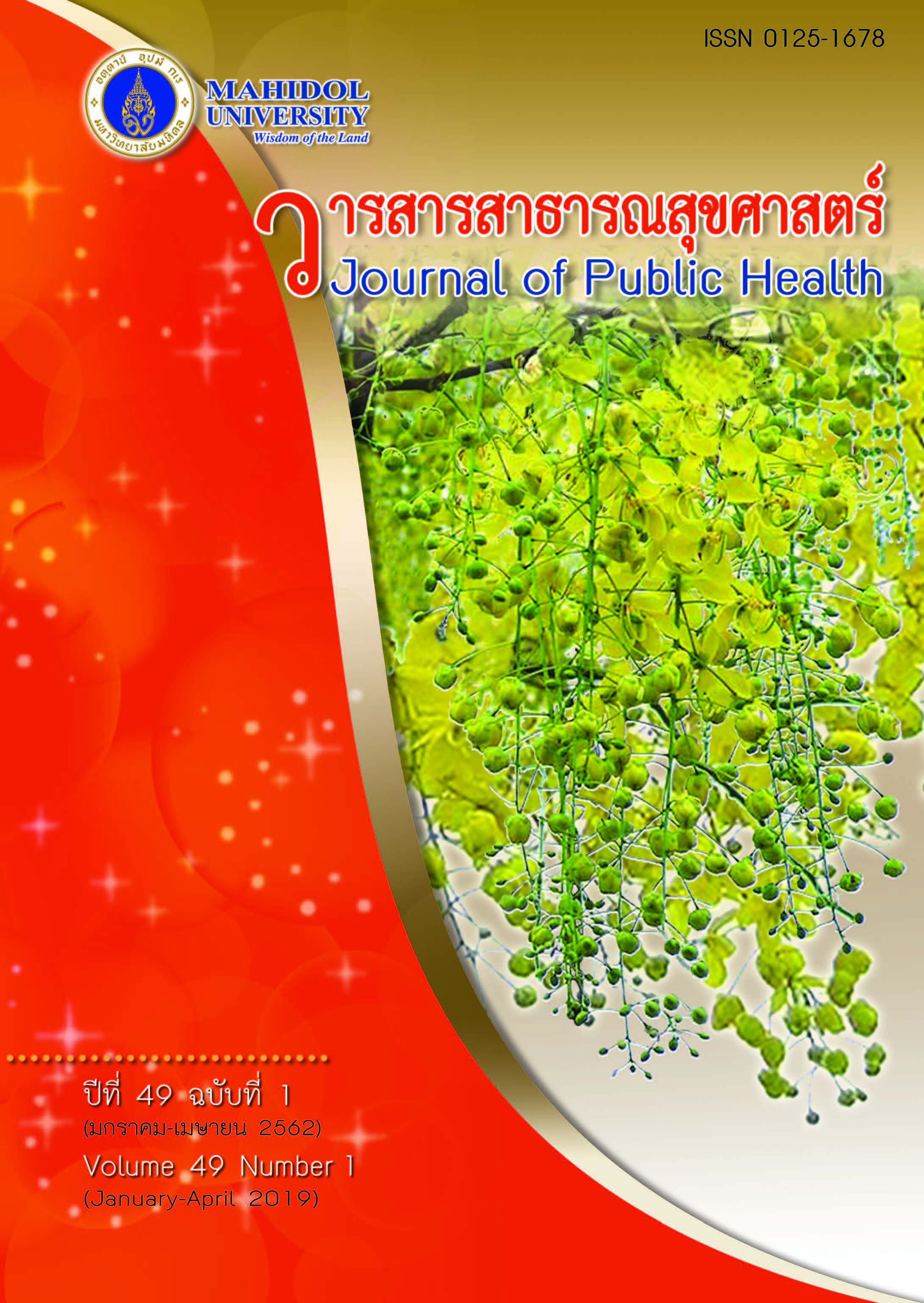Detecting Insecticide Contamination and Determining Prevalence of Protozoa in Fresh Vegetables from Fresh Markets, Maung Phayao, Phayao Province
Keywords:
Protozoa, Fresh Vegetables, Molecular Biology, Fresh Market, Phayao Province, Protozoa, fresh vegetables, PCR, insecticide contamination, fresh market, Phayao ProvinceAbstract
Organic vegetables remain popular among consumers. Nonetheless, food-borne pathogenic protozoa contaminated from soil, water, transportation and applying organic fertilizers may pose a negative effect on health. The present study aimed to detect insecticide contamination, determine the prevalence of protozoa and using PCR, examine the correlations of vegetables with insecticide contamination and protozoa positive samples in fresh vegetables from fresh markets, Maung Phayao District, Phayao Province. Ten fresh vegetables were randomly bought from markets (100 samples) including kitchen mint, lettuce, coriander, nappa cabbage, chinese kale, cabbage, celery, spring onion, cilantro and Thai water convolvulus. Kitchen mint was the most insecticide contaminated, at 80% (8/10). The most positive results in detecting protozoa were 80% in 3 types of vegetables including kitchen mint, nappa cabbage and chinese kale. The application of insecticide on vegetables was not correlated with the positive identification of protozoa at χ2 = 2.115, P >0.05. The results of this study included detecting protozoa and defining the factor of protozoa contamination with fresh vegetables that affect humans. This information could be applied to prevent contamination and clean fresh vegetables before consuming.
Downloads
Published
Issue
Section
License
Creative Commons License CC-BY-ND


